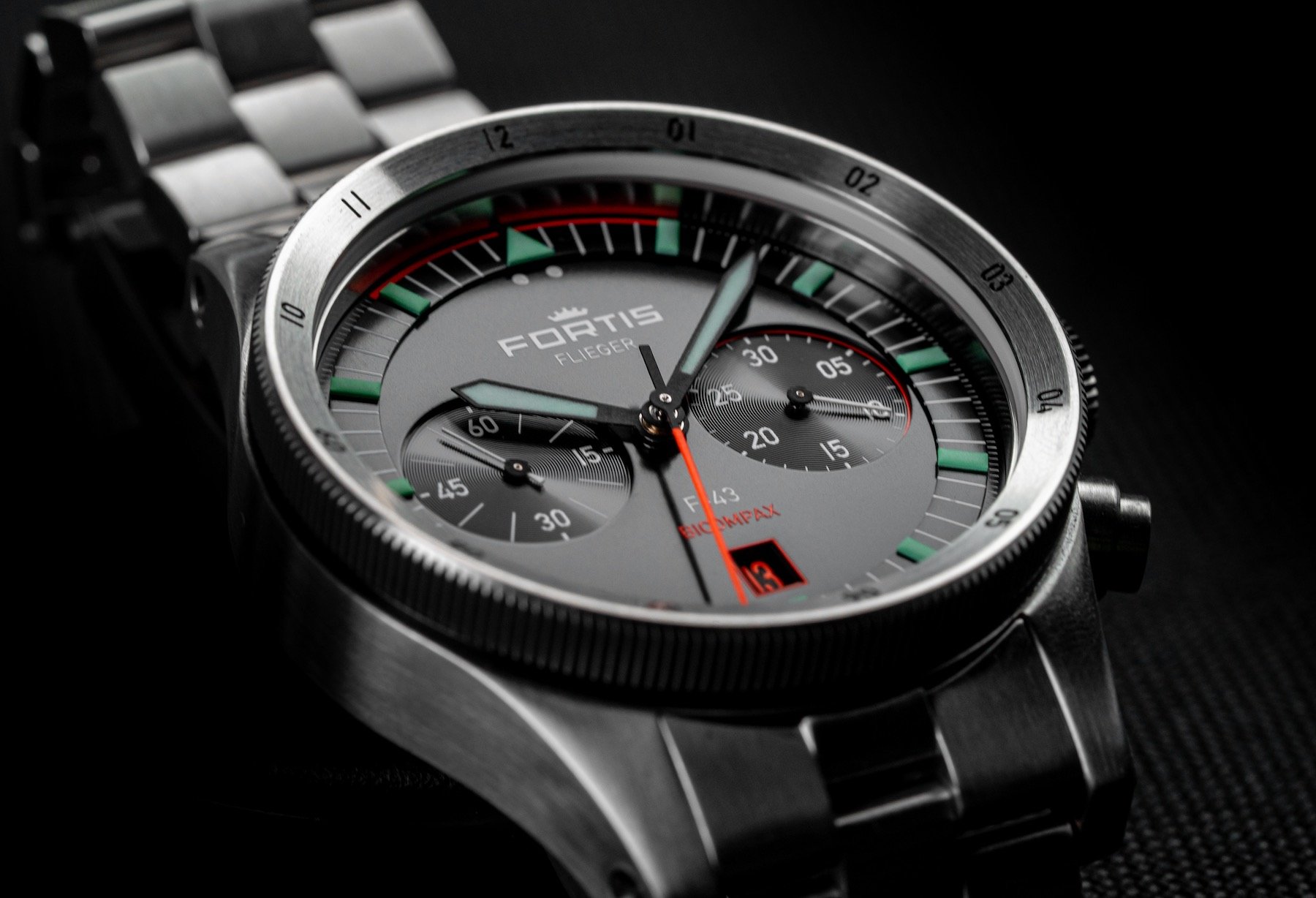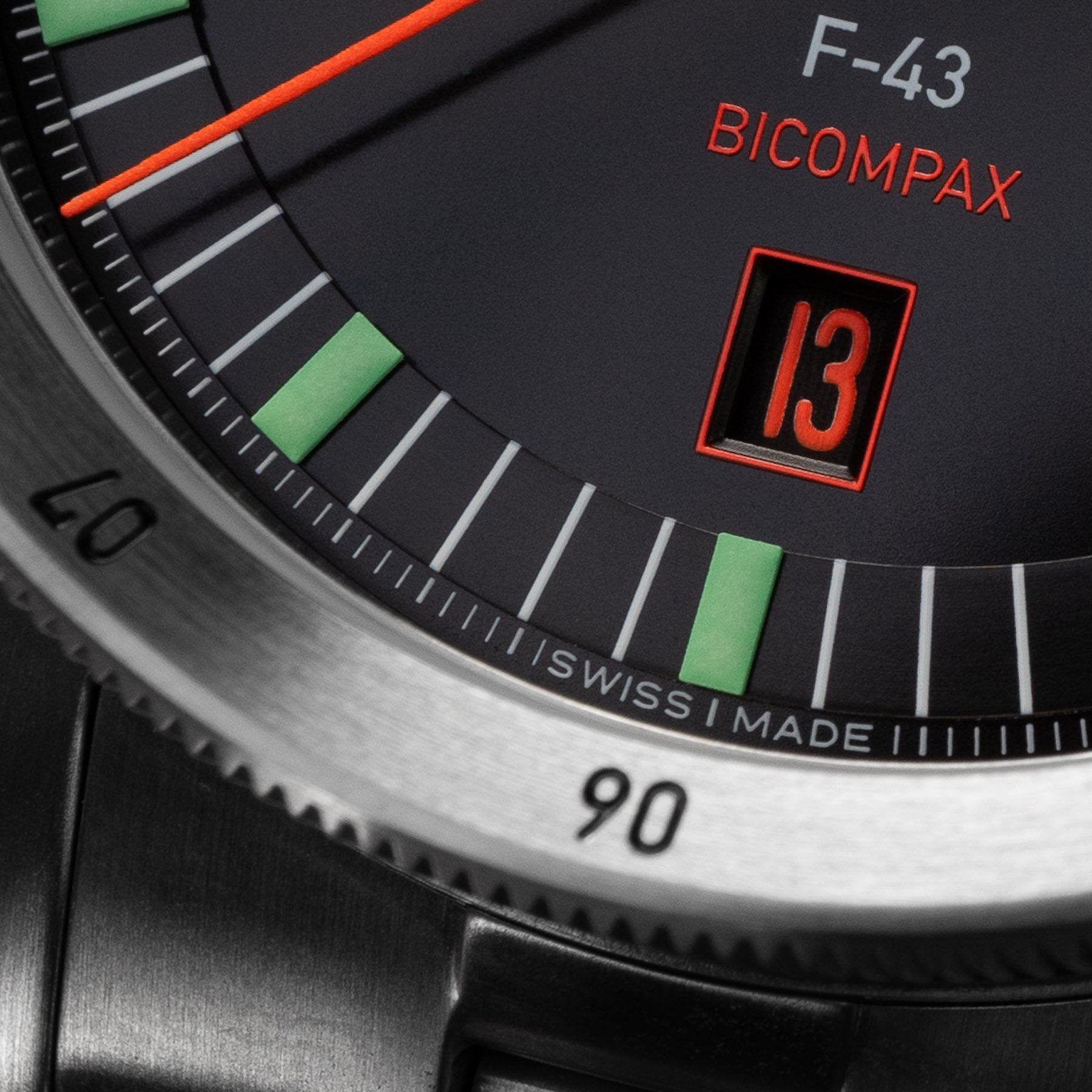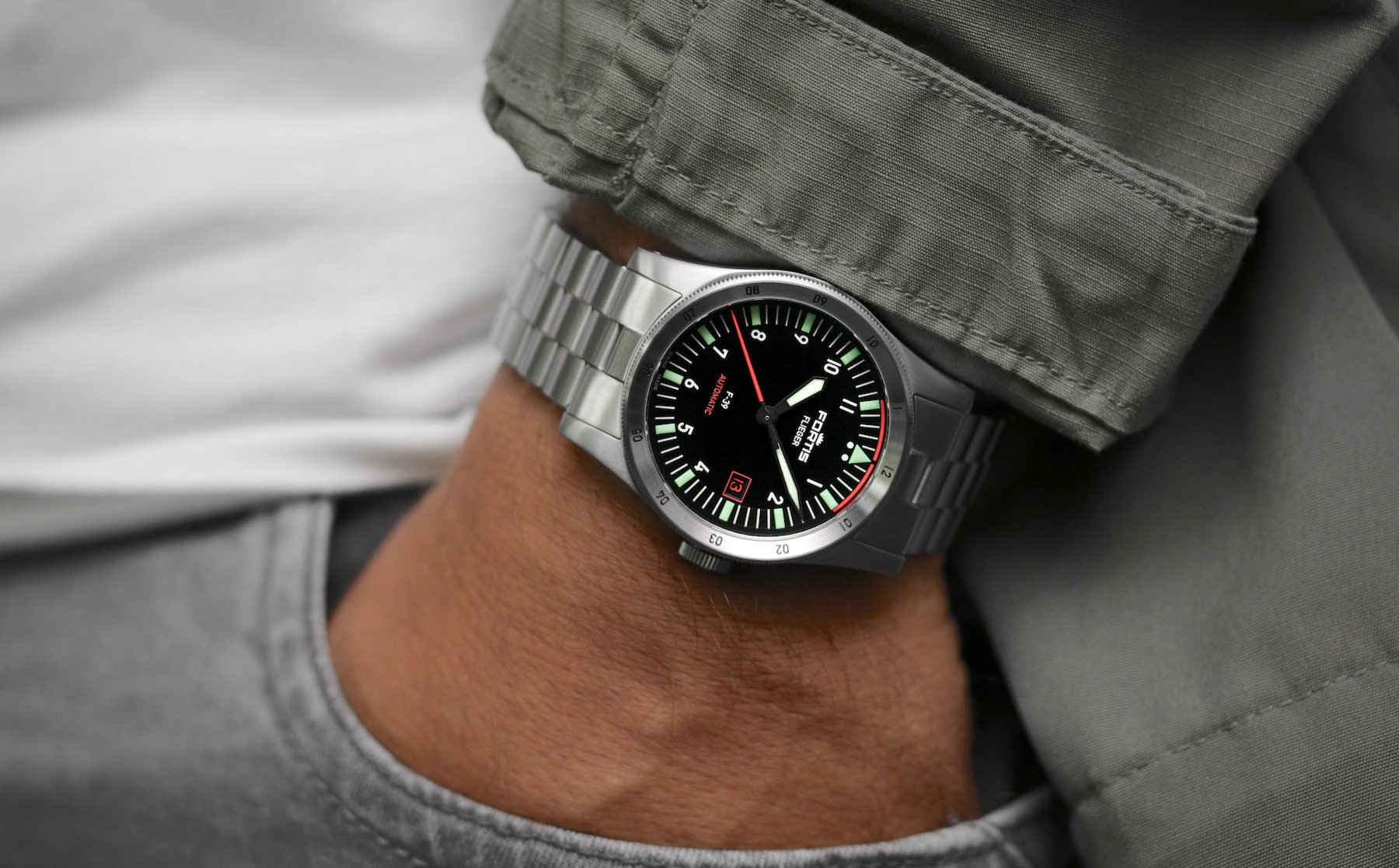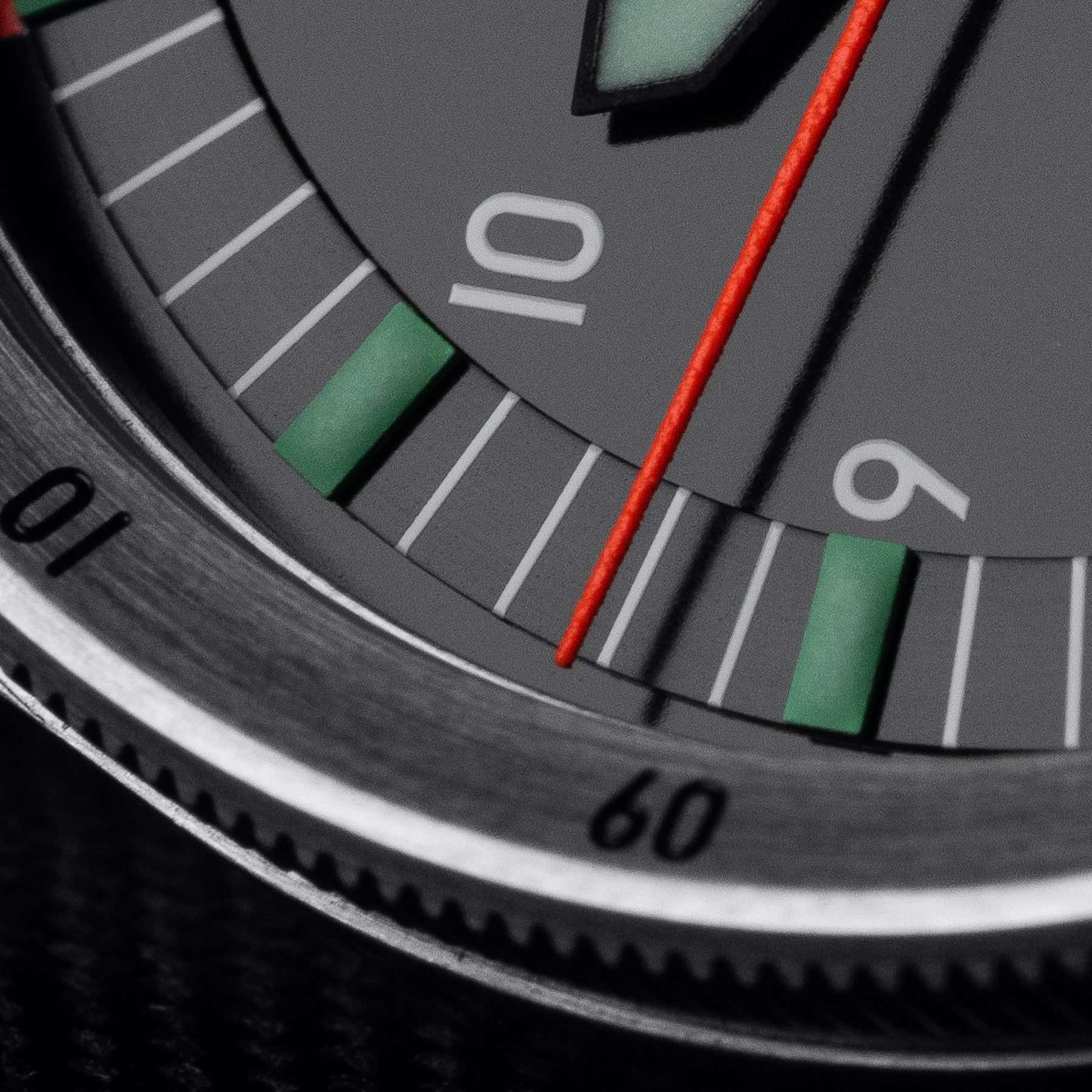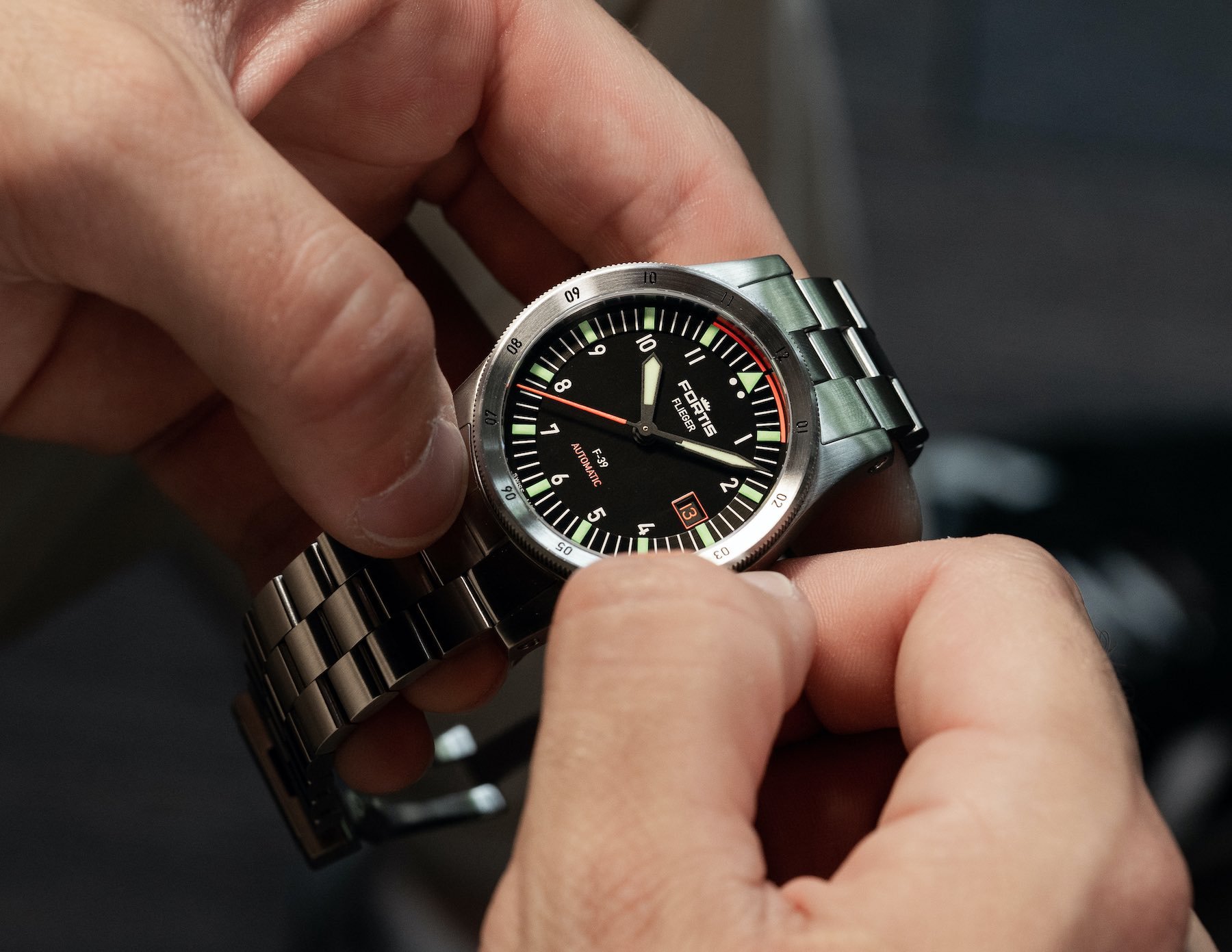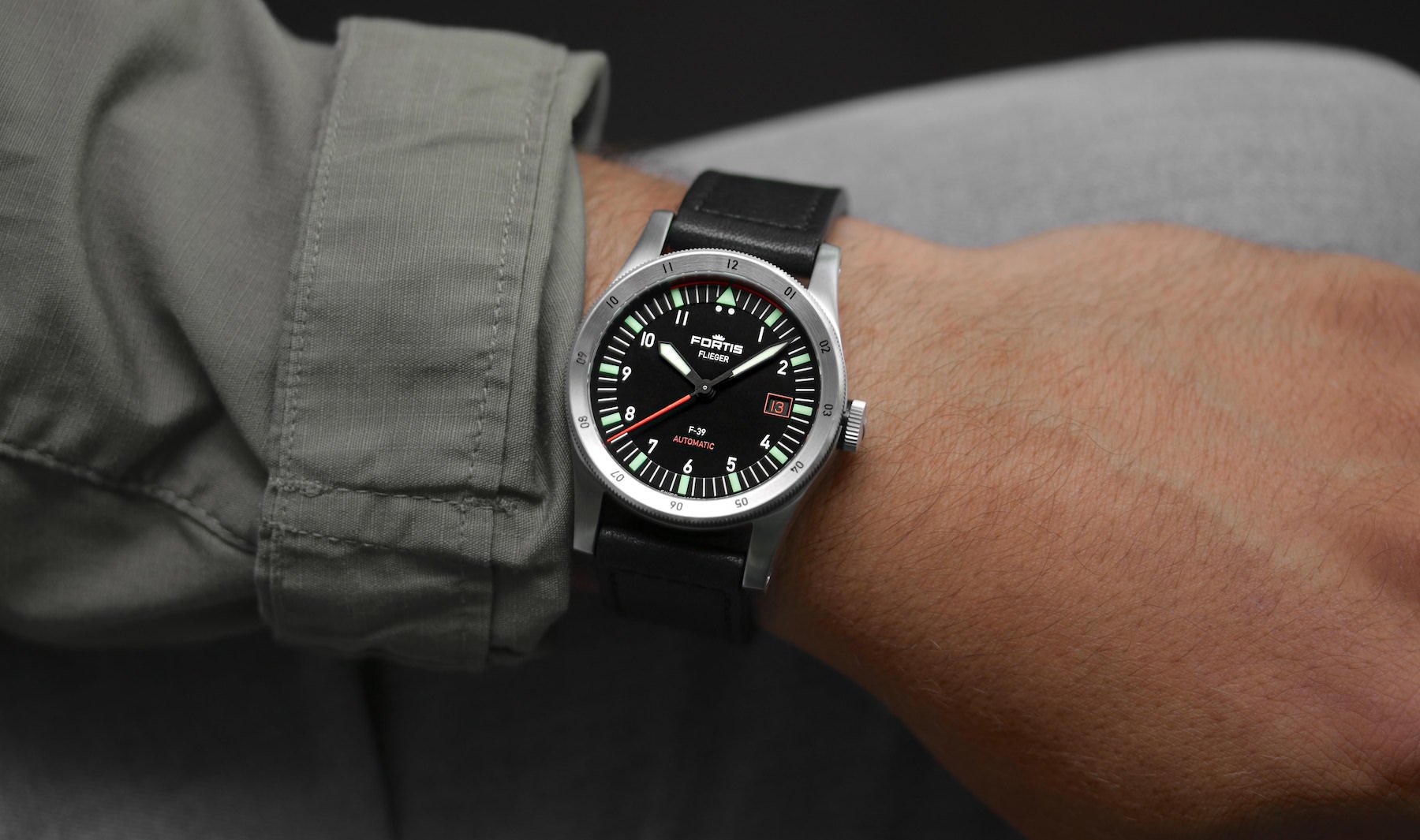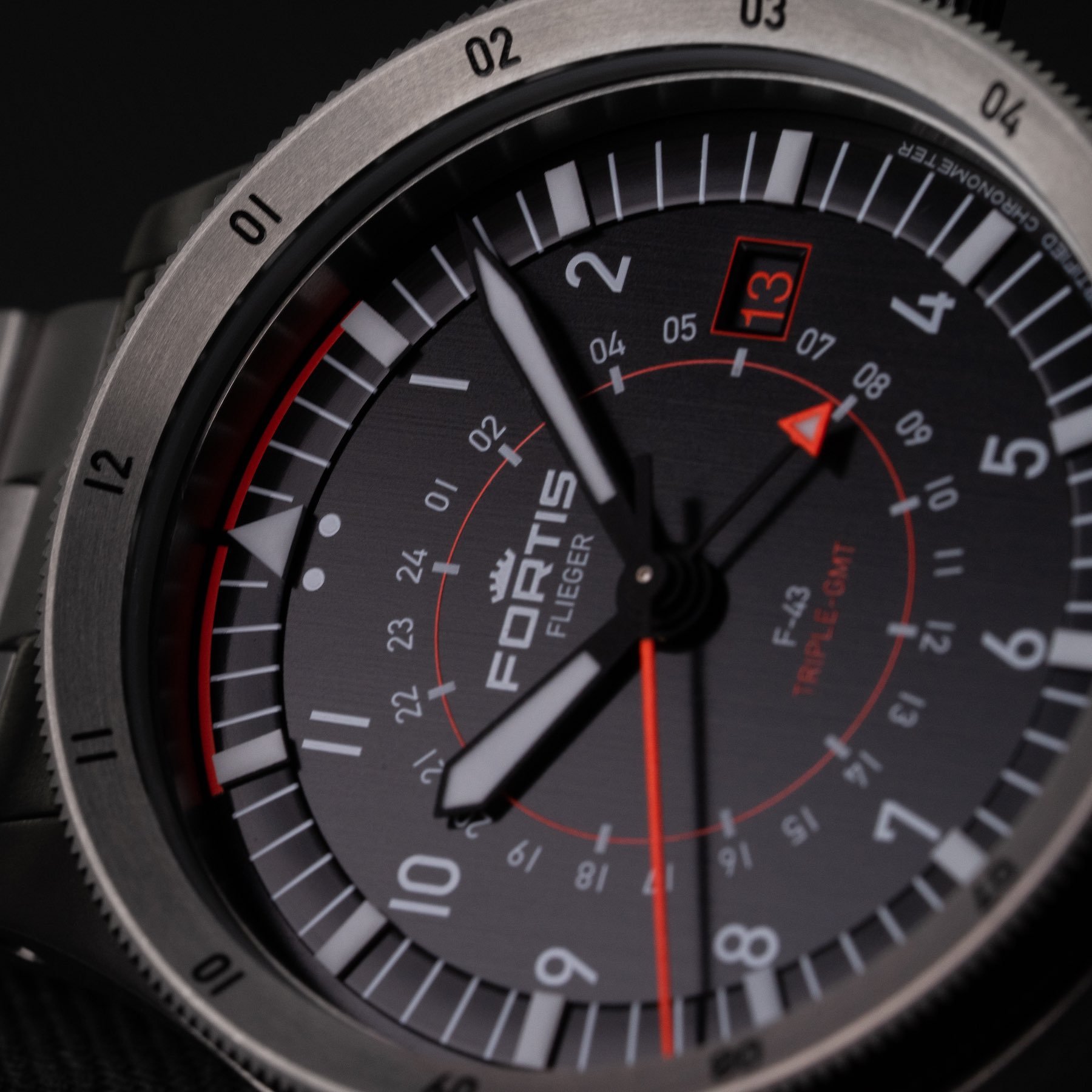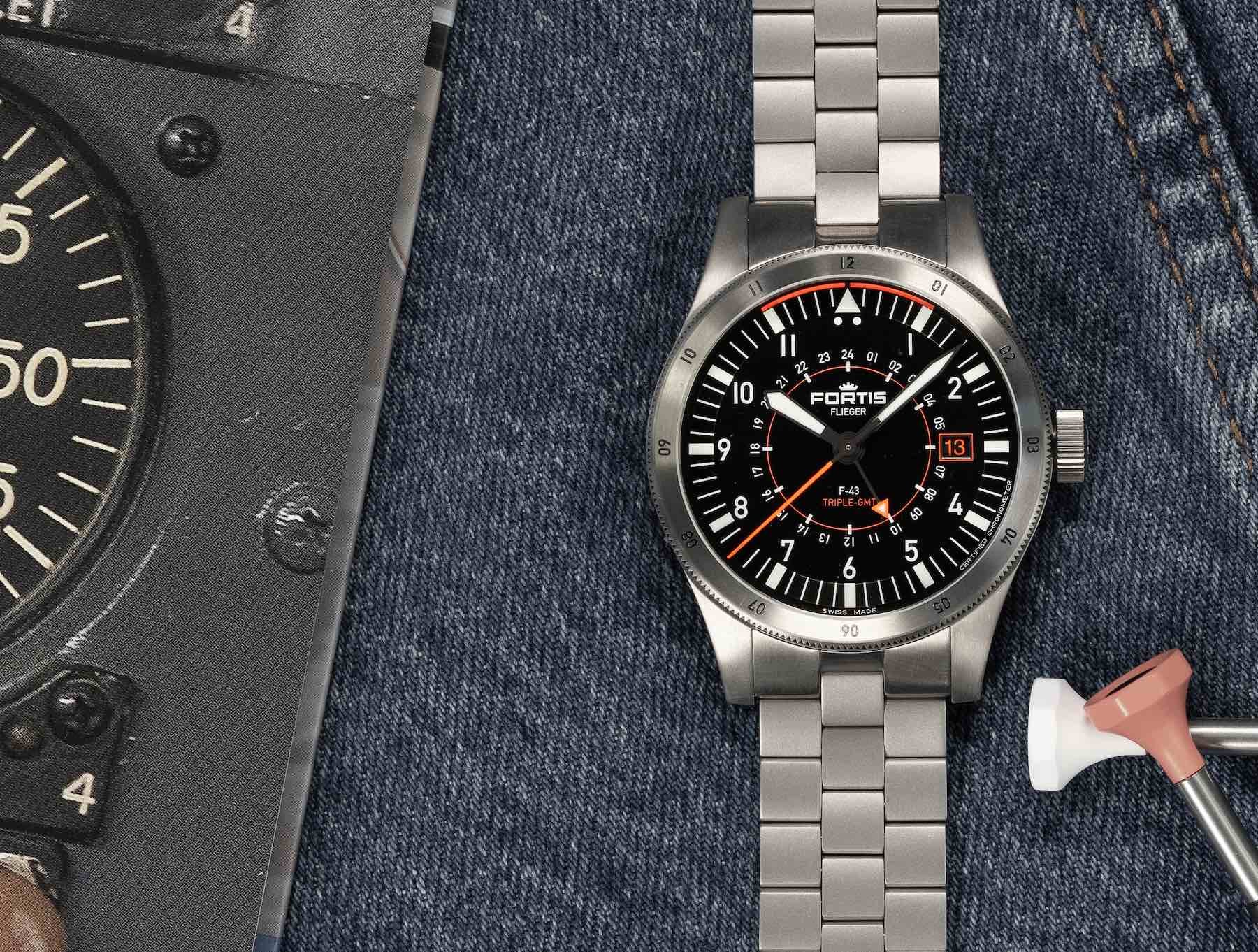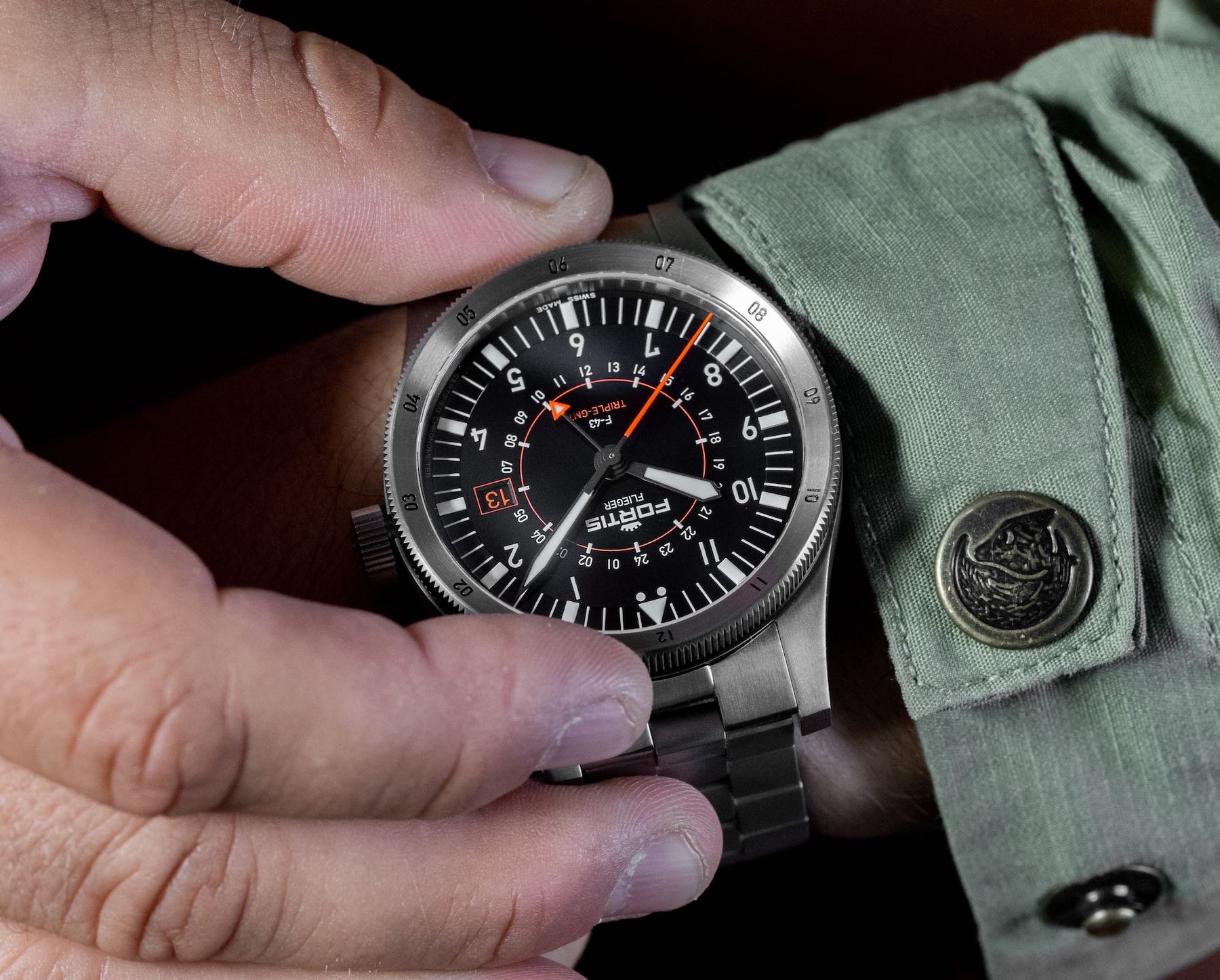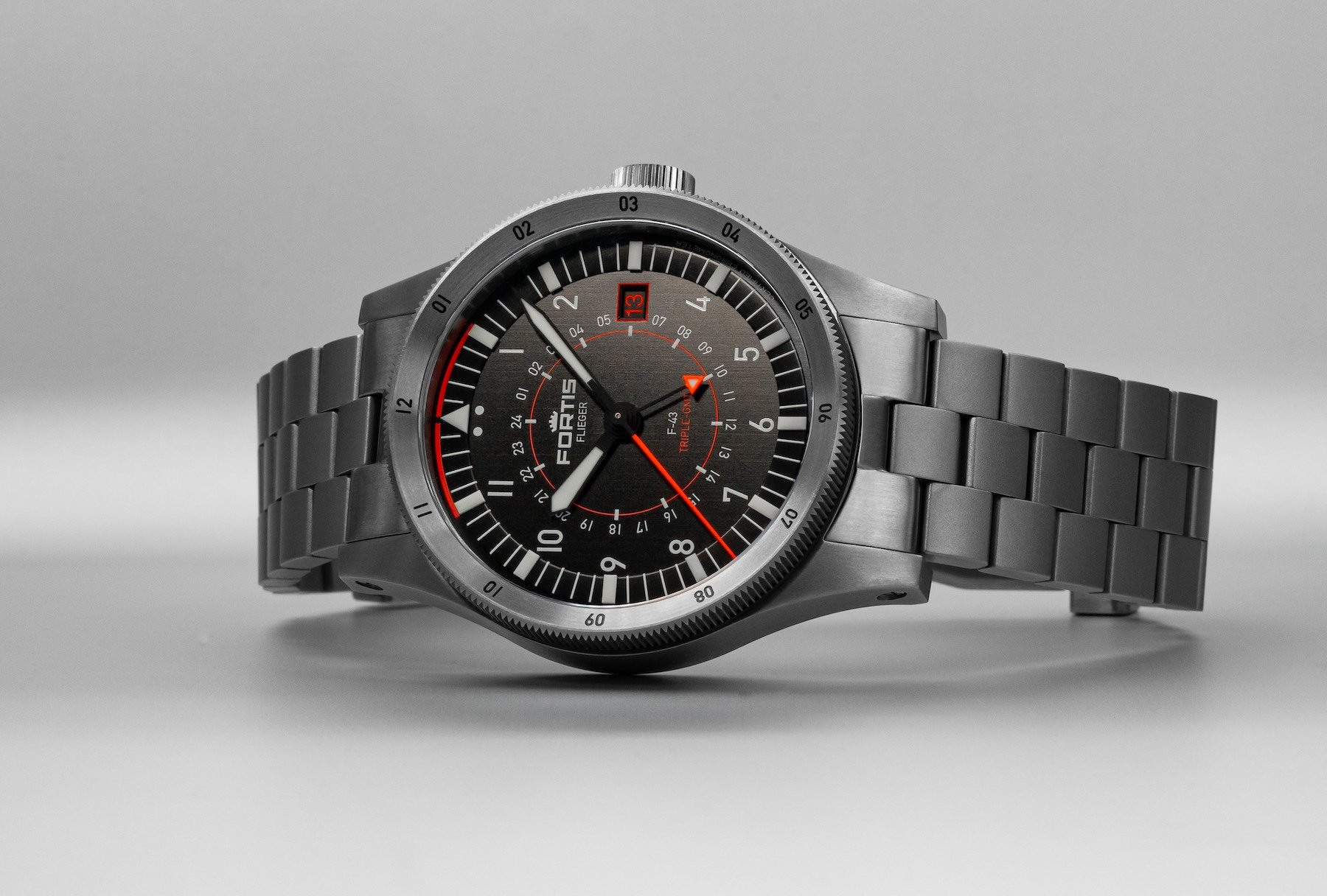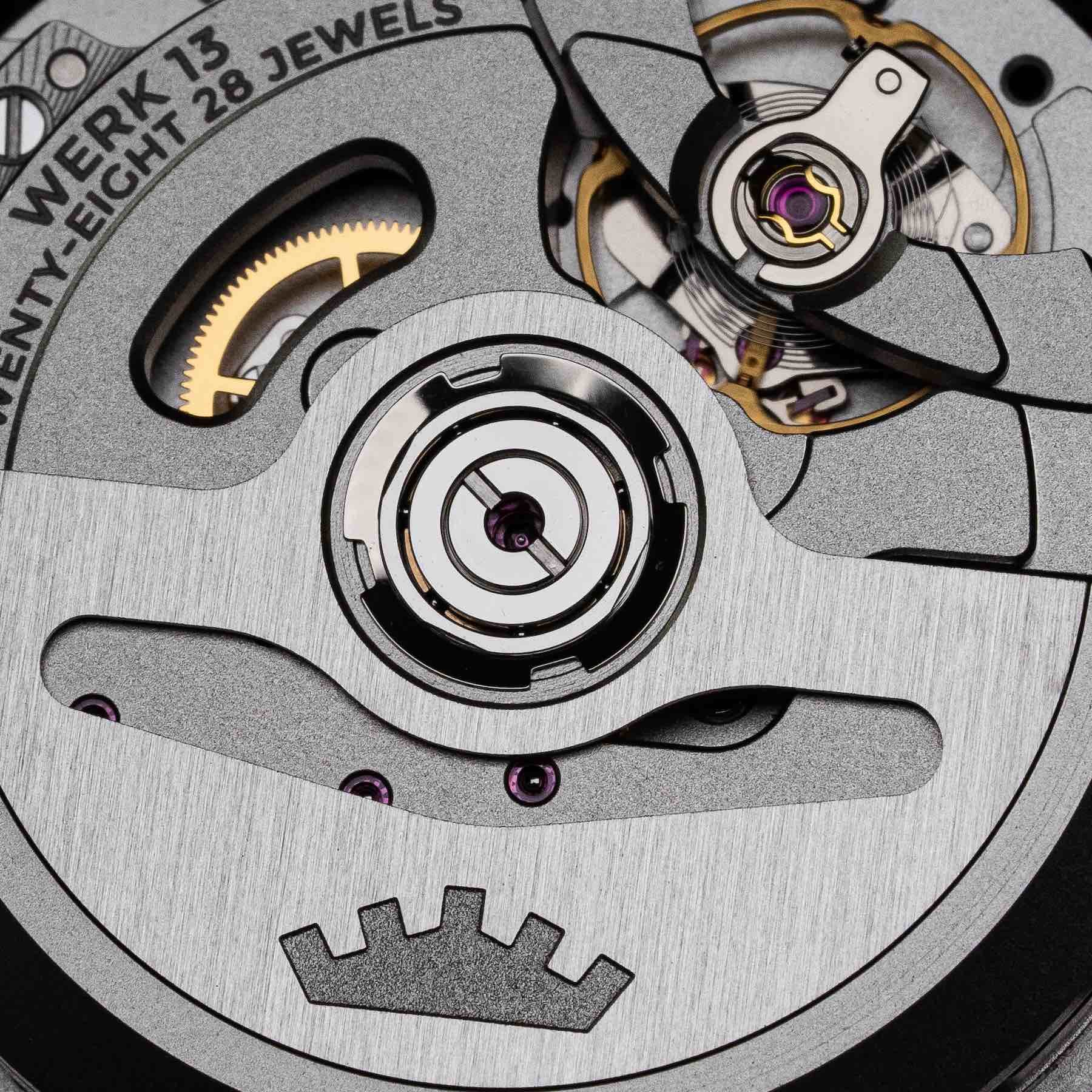A Look Back On A Strong 2020 From The Fortis Flieger Family
The 13th of every month is now known as “Fortis Day”. 2020 has seen new watches debut in the Flieger family on the 13th of August, September, and October. Now, as we approach the curtain call of perhaps the maddest year on record, we take a look back on a triumphant trio of release dates that brought us the F-43 Bicompax Chronograph, the F-41 and F-39 Automatics, and the most recently released F-43 Triple GMT, outlined the future aesthetic of this part of the brand’s line-up.
Fortis CEO Jupp Philipp must be feeling himself right not. He and his team have had a barnstorming year when it comes to reinvigorating a brand that was in dire need of a modern identity. What’s impressed me most about the overhaul en masse, is the way it all feels entirely natural and yet entirely new. That’s the kind of symbiosis it’s hard to predict. It is really only possible to look back on the inspired efforts of others in admiration.
A few months ago, I wrote that Philipp was hoping to “better communicate the aesthetic DNA of the brand’s future while honoring the brand’s past. A striking aesthetic and high functionality are the ingredients for success here.” That goal has been met with aplomb. With each subsequent release, Fortis impressed me further. I am now all-in on last month’s GMT and cannot wait to see what’s coming next from the brand in early 2021. For now, though, let’s take a look back on the four watches to titillate 2020. Please vote for your favorite at the end of the article, and let us know what you want to see from Fortis next year and beyond.
Fortis Flieger F-43 Bicompax Chronograph Is A Blueprint For The Future
I was lucky enough to see the upcoming models from Fortis what seems like a lifetime ago at the Inhorgenta fair in Munich back in February. Ever since then, I’ve been trying to suppress my excitement. I love color. I really can’t get enough of brands trying something new and fully committing to it in the design. What we have here is a great example of that. The size of this piece (especially on the wrist) would be enough to make a statement without the creative use of color, but the vivid Berlac Fluor Orange and raised luminous green sections combine to create something truly arresting.
This Flieger has its roots in the Fortis model from 1987. Back then, the range was all business. Strong, reliable pilot’s watches designed to be used by aviation professionals above the clouds. Today’s interpretation is a little different. Fortis even goes so far as to state “This is not a pilot’s watch” in the recently released press material. And while it is still a highly functional and impressively legible watch, I think I understand what the brand means by it.
This is not a pilot’s watch. It is something much more. It is a new cornerstone, a benchmark, the first of many exciting timepieces to come. Whether this model or any like it that follow become icons of the brand is unclear, but I think that is very much what is intended here.
Overdue respect
The Fortis brand rarely gets the respect it deserves. With such a long and important history behind it, that is a shame. Prior to the current owner Jupp Philipp’s acquisition of the company, Fortis had experienced some rocky times. Philipp’s attitude has always been to keep things simple and to keep the core identity of the brand front and center in everything it does.
The new Flieger F-43 Bicompax is, fundamentally, a very straightforward watch. It is made much more interesting by its decoration and, most importantly, its execution. Having big ideas is one thing; realizing them to this level of quality is quite another. Read the full review here…
Time And Date Fortis Flieger Watch Comes In Both 39mm And 41mm
The F-43 has returned to base. Why? Because it’s come home to welcome the brand’s newest recruit to an evergrowing aerial squadron. The Fortis Flieger F-43 Bicompax was well-received, lining the nest for its smaller, but no less impressive brother. For quite some time, Fortis fans have been calling for something a little smaller, a little lighter on the wrist, and a little bit special. With the launch of the time and date Fortis Flieger F-series in 41 and (a satisfying) 39mm, all three prayers have been answered.
The Fortis Flieger family first emerged in 1987. Since then, subsequent models have followed the same code: Live simply; live well. The beauty of these Fortis watches is in their pared-back confidence. Nothing superfluous remains, and even the most arresting design flourish (and by that, I am referring to the “Synchroline” at 12 o’clock) has a function.
In a crowded marketplace, creating something identifiable is hard work. Annoyingly, for everyone else still in the process of undertaking the necessary labor, a successful end product often looks like it required anything but. In fact, it looks simple. It looks obvious. To the untrained (and even experienced) eye, the design of the Fortis Flieger F-41 and F-39 models looks so comfortable, it is as if it could never have been any other way.
An undeniably vivd color scheme
And yet it so easily could. We know this because we’ve seen it time and time again. Designers — even the very best — are prone to repeating the same things over and over again, without seeming to realize it is still possible to do things differently. Take the bezel of this Flieger collection, for example. Conventional wisdom suggests a bezel profile should be convex. Occasionally we see flat bezels (which are often employed for their visual distinctiveness and potentially cost-effective machining). Rarely, however, do we see concave bezels.
This isn’t exclusive to Fortis. It’s been done before and it will be done again. But it won’t ever be done regularly. It will never be mainstream. Fortis knows that, and has taken pains to build this feature into the DNA of the Flieger range congruously, so that it doesn’t stick out like a sore thumb, or appear too patently conscious. The fact it has 24-click GMT functionality is an added bonus.
Will color ever fade?
No, not the paint itself. That will likely change over (a very long) time, but given the quality of modern paints (especially those produced by the Swiss Berlac) we won’t see the same kind of cracking or discoloration we take for granted with vintage pieces. I mean will the colors used on this dial age well in the eyes of fashionistas the world over? Will it still be cool in 10, 20 years? Is it even “cool” now?
A date to remember
I know I gushed over the orange numerals and date window surround when it made its first appearance on the F-43, but bear with me here. This element is so achingly cool I can’t leave it alone. It makes such a difference. Date windows are often sources of frustration or crushingly boring. This one is neither. Its position — in place of the 3 o’clock Arabic numeral — doesn’t even cut into the Brixtrack lume at all. It is a vibrant pop of this delicious color that I’m really struggling to get tired of. Read the full review here…
Fortis F-43 Triple-GMT Watch Has A Dial To Die For
GMT complications have, for the last couple of years at least, been front and center of the watch industry’s hive mind. Plenty of brands have released their take on this classic and never-more useful complication in the rollicking wake of Rolex’s 2018 update of the GMT Master II with a Pepsi bezel.
This new Fortis release combines the additional functionality of a GMT with the newly established (and very well received) colorway that ties this new generation of Pilot-inspired watches together. Why the “Triple-GMT” title? Likely because this watch enables the wearer to read the time in three zones simultaneously, using the hour and minute hand against the dial or against the 12-hour bezel, or by using the central GMT hand against the 24-hour track in orange. That’s awesome, but how does this one compare to the previous three releases we’ve seen from Fortis in the second half of 2020 so far?
An important note on size
I was a big fan of last month’s drop. I really enjoyed the smaller option (the 39mm Flieger) as I felt it opened up a whole new customer base for the brand. While the best-balanced design thus far probably fell to the slightly larger 41mm variant, the new Triple-GMT has a lot to offer in that regard.
43mm is the first step into large, or even oversized territory, but is by no means unwearable as a diameter alone. The key, once this kind of diameter is reached, is how the watch head sits on the wrist when thickness and lug length are taken into account. The first 43mm model to debut this year — the F-43 Bicompax Chronograph we covered here — was a hulking timepiece, with a high-sided case (courtesy of that cool-but-controversial concave bezel). It was, in many ways, the perfect watch to launch this new era of Fortis timepieces because it was so striking in colors and proportions.
So what’s the problem?
The issue could be, however, that it is simply too much watch for everyone to handle. That’s no bad thing, of course, provided a brand takes pains to serve the rest of its audience too. Last month’s release seemed to combat this concern with aplomb. And yet a market remains for large-sized watches with the additional interest of a complication (such as a GMT).
Although the new F-43 Triple-GMT is not small, it sits lower on the wrist thanks to its very slightly slimmer case construction (it measures 15.5mm tall as opposed to 15.73mm). This has the dual benefit of added comfort and (due to the diameter/width ratio) perhaps even greater wrist presence. For me, therefore, this one would rank higher in the desirability stakes than the Chronograph variant.
Both watches share the same lug-to-lug measurement (54.4mm), but, additionally, the Triple-GMT is noticeably lighter. On a leather strap, the watch head alone is over 30g lighter (106.03g vs. 136.95g). The difference becomes even more noticeable when fitted to their metal bracelets. The Fortis F-43 Bicompax weighs 245.76g on its bracelet, while the Triple-GMT comes in at just 162.95g in total when worn on a bracelet. Why? Simply because the Bicompax was made from steel; the Triple GMT, however, is fashioned from titanium…
The really big news
But there’s more. There’s something very special going on inside the Triple-GMT. The eagle-eyed among you will have noticed how familiar the rotor weight of this movement — named Werk 13 — looks. That’s right, you’ve seen this pattern before, but not from Fortis. What we have here is a Kenissi-made movement. The Fortis F-43 GMT triple marks the first of many collaborations to come. And, in my opinion, is the really big news of this release.
Yes, the added functionality s appreciated. Yes, the dial layout is truly awesome. But the movement upgrade? That’s special. It adds a huge amount of value to this Fortis line and the brand in general, in my opinion.
Better still, the Werk 13 Manufacture Calibre is a COSC-certified chronometer.
So how good a GMT movement is Werk 13? Well, it has a jumping hour feature that means the wearer can easily shift the timezone forward or backward by one-hour increments at any time of day. There’s a 70-hour power reserve, which we’d expect from Kenissi’s recent spate of calibers but is still by no means standard. Better still, the Werk 13 Manufacture Calibre is a COSC-certified chronometer. This is, to me, one heck of an upgrade for an already soaring range. The Triple-GMT, priced at €4,500, has just become my new favorite Fortis. But what do you think? Read the full review here, and learn more about Fortis here.

